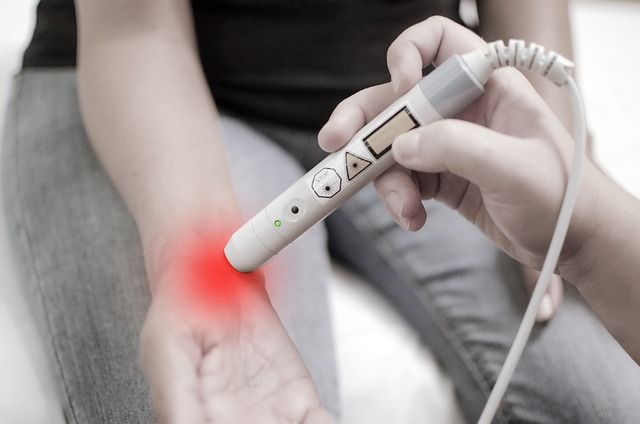True Story: Dementia-Related Memory Loss Restored 50% OVERNIGHT
Dementia is a serious condition that affects over 55 million people worldwide, with nearly 10 million new cases each year.
The impact of dementia goes far beyond the person who is diagnosed; it also deeply affects their families, who struggle with the emotional and mental pain of seeing their loved ones’ memories fade away.
Watching someone you care about lose the ability to do everyday things, forget important moments, or fail to recognize familiar faces can be incredibly hard.
Families often feel helpless and overwhelmed, desperately searching for ways to restore what has been lost.
But there is hope.
Take Marshall, a 94-year-old who completely forgot how to use his phone and computer after being diagnosed with dementia.
After just one night of using Vitality NAD+ Booster, a supplement that contains nicotinamide adenine dinucleotide (NAD) precursors, Marshall’s memory began to improve, and he started to feel more like himself again.
His story shows that it’s possible to regain lost memories and improve mental clarity.
We hope that you or your loved ones can also benefit from optimizing your NAD+ levels.
Read Marshall’s story below.
Boost your NAD levels to optimize your health and longevity. Get an exclusive 20% OFF today by using code Blog20. Click here to order.

I’m not sure what I expected, but…
I was surprised when my dear friend’s cognition declined dramatically overnight at age 94.
Sure, there had been some memory lapses over the course of his 93rd year.
He occasionally forgot his house keys when he went out. He didn’t always remember everything he had driven to the grocery store to buy. (Yes, he was still driving safely at age 92 and beyond.)
Those lapses were the kind that everyone I know over the age of 40 has complained about, myself included.
Still, the signs of Marshall’s cognitive decline did not progress over the course of weeks or months, as I had believed they would, were they to happen at all.
I had hoped that he was past some imaginary statistical cutoff date by which I had presumed dementia would happen. I had read somewhere that by the age of 80, 1 in 6 people experienced some degree of dementia.

When my dear friend reached and passed his 90th birthday with a mind sharp as a tack I assumed he was all clear.
By the time he celebrated his 94th birthday, I relished the fact that he remembered things better than many 40-year-olds and he still “figured stuff out” (his phrase) really well for a person of any age.
Give him a problem to solve and if he hadn’t done so by day’s end, he would always spring out of bed the next day declaring, “I’ve got it!” having solved the problem throughout the night.
Marshall’s great mind and good memory were perfectly intact until one fateful day.
That day I discovered him sitting on his bed staring quizzically at his phone.
I asked him, “What are you doing, M?” He looked at me, bewildered, and replied, “I don’t know.”
I pressed him further. “What do you mean, ‘You don’t know’? Are you trying to call someone on your phone?” I asked.
“I’m trying to figure that out,” he told me. “I’m working on it.”
His words weren’t making sense to me. Working on what? What did he mean?
“Marshall,” I began, worried, “What do you mean ‘working on it”? What’s to work on? Just make the call if that’s what you’re trying to do.”
He looked at me with a blank expression and replied, “I don’t know how.”
I flashed back to years earlier when a very beloved actor friend of mine had called me at my apartment in New York City. He was talking to me in disconnected, somewhat incoherent phrases that I couldn’t understand.
Clearly, something was wrong.
I asked him where he was and he somehow managed to tell me with words that made some sense that he was at the nearby Apple Store.
I told him to stay where he was, that I would be right over. I quickly threw on a jacket and ran the four blocks to the store.
I found my friend sitting at a display bench downstairs in the store with an Apple clerk who seemed concerned.
My friend was insisting that she sell him a new iPhone, which she explained to me she didn’t want to do because his current model phone was working just fine.
I told her to cancel the order, which she didn’t want to place anyway.
I asked him a few questions, which he answered only somewhat coherently.
I apologized to the salesgirl and walked my friend out of the store. I found a bench where he could sit comfortably while I called his family at their home.
They were understandably concerned when I told them about his condition.
They were in another state but together we made the decision that I should get him to the nearest Urgent Care.
The staff there quickly diagnosed a suspected stroke and, with their help, I hastily got my friend to a nearby hospital.
He spent a week in the hospital and recovered, but things could have gone in a whole other direction had I not jumped into action when I did.
Was Marshall suffering the effects of a stroke? I determined to keep a close eye on him throughout that entire day.
I observed him sitting and staring into space from time to time, as though lost in thought.
When I asked him what he was thinking about, he said, “I’m figuring something out,” and he would return to gazing off into the distance with a vacant stare.
Later that day I discovered him sitting at his computer, staring at the screen, immobile.
“What are you doing, Marshall?” I asked him.
“I don’t know. I can’t answer that,” he said, clearly frustrated and confounded.

From one day to the next my friend had forgotten how to use both his cellphone and his computer.
Worse, he seemed “not all there” mentally.
There’s more but I won’t go into the details, which included some bathroom and basic walking issues. Suffice it to say he had devolved significantly over just 24 hours.
Over the next weeks, I took my friend from doctor to specialist to lab to ascertain exactly what was going on.
A brain MRI (not fun for him at all) ruled out any suspected brain mass/tumor but…

A battery of cognitive tests with a gerontology professional confirmed that he was experiencing mild to moderate dementia.
Watching him take that cognition test was painful because questions that he would have aced just the week before gave him great difficulty in answering.
He couldn’t even begin to draw the clock face requested in the test.
A former whiz with numbers, he was stumped when asked to count back from 100 in 7’s. (100, 93, 86, etc.) His frustration turned to anger and eventually, he refused to participate in completing the test.
Once home, I was shocked to discover that Marshall had completely mixed up his daily meds.
As a forever health freak and gym rat, he had always been compliant and rigorous with taking vitamins and the few prescriptions he was on.
He had gone on his first prescription meds just a few years before when diagnosed with non-small-cell lung cancer.
He was doing ok with that disease, given his age and the severity of such a condition.
The health equity he had built up over decades of clean, healthy living stood him in good stead to do battle with cancer.
He never missed a prescribed dose of anything the oncologist ordered and his vitamin game was strong after years of taking a full regimen of fitness and bodybuilder supplements.
However, a review of his medicine cabinet that day showed that things had gone very awry.
Some bottles that I knew should be there were missing and others contained far too many pills than they should have since the date of fulfillment at the pharmacy.
When I asked him if he had been taking his pills regularly, as he had always done, he looked at me with that new vacant, uncomprehending stare.
I took possession of all bottles from his bathroom shelf and called all of his prescribing doctors to review his treatment plan and get him back on track.
I took over the administration of meds and supplements. I felt lucky to have discovered the issue when I did.
Fortunately, doing some math on the bottles and the number of pills inside them proved that the pill problem had occurred concurrently with the cellphone and computer problem. Suddenly and recently.
With a heavy heart, I booked tours of Assisted Living homes in advance of what I was sure would soon be the need for 24/7 memory care.
And then I had a thought.
What if Vitality NAD+ Booster, a NAD supplement formula and known neurotransmitter, could help?

It is a favorite of mine and so many others for energy mental clarity and more. Why not give it a try?
That night I gave Marshall his first dose of the clinically-proven powder. The next morning? Nothing short of a medical miracle.
I could kick myself for not having recorded the “before” Vitality NAD+ Booster Marshall to the man who woke up that next day.
When I claim a 50% improvement in his cognition OVERNIGHT it sounds preposterous even to me!
Except I witnessed it. I continue to see it daily.
Has he suddenly regained 100% of his memory and ability to solve problems and think clearly?
Most definitely not. He is, however…
At least 50-65% cognitively recovered.
He knows how to use his phone, he’s back at the computer, those bathroom issues are pretty much gone, and he’s using his walker and cane as well as he formerly had.

He is now back in charge of his meds and supplements because he began to remind me to give him doses as he remembered what to take and when.
I check daily to make sure he has not forgotten anything, of course, but so far, so good.
I do mix up his Vitality NAD+ Booster for him and give him two scoops daily.
When he sees me coming with it, his eyes light up and he says, “Dr. She’s stuff?” and I shake my head “yes” in acknowledgment.
I think he looks forward to it because he knows the good it does him.
During a doctor visit with his Primary Care Physician yesterday, the doctor acknowledged the improvement he saw in Marshall.
I told him what I had added to the program and he said, “Well great, there is good data on that supplement.”
He’s one of the physicians I had taken Marshall to see to evaluate the sudden mental decline.
He’s the same doctor who had told me back then several months ago that Marshall could not be left alone anymore.
“If he can’t use his phone and he gets in trouble, it’s a big problem,” he advised.
Plus, he mentioned the stove incident that had happened during that awful week:
Marshall had turned on a gas burner that didn’t light and some gas fumes escaped before I noticed what was happening.
I’m grateful for however many months, hopefully, even years, that this product will enable my dear friend to enjoy his mind and his memory.
If it stopped working tomorrow, I would still be grateful today for the past six weeks of improvement.
Dementia moves in and makes itself at home with all too many families today. It’s a significant global health challenge.
Here are some key statistics highlighting the fact that it’s not “if” it’s “when” a friend, neighbor, work colleague, or family member of yours may experience this heartbreaking condition:
- Global Prevalence: As of 2023, more than 55 million people worldwide are living with dementia. This number is expected to nearly triple by 2050, reaching 139 million due to aging populations.
- Incidence: Around 10 million new cases of dementia are diagnosed each year. That equates to one new case every 3 seconds.
- Age Factor: Dementia primarily affects older adults. About 1 in 6 people over the age of 80 have dementia. However, early-onset dementia, which occurs before the age of 65, accounts for about 9% of cases.
- Economic Impact: The global cost of dementia is estimated to be over $1 trillion annually, including healthcare costs, informal care, and loss of productivity. This figure is projected to increase significantly in the coming decades.
- Mortality: Dementia is one of the leading causes of death worldwide. In many countries, it ranks as the second or third leading cause of death among older adults.
- Gender Disparity: Women are disproportionately affected by dementia. Approximately two-thirds of people with dementia are women, partly because women tend to live longer than men.
- Alzheimer’s Disease: Alzheimer’s disease is the most common form of dementia, accounting for 60-70% of all cases.
These statistics underscore the importance of research, prevention, and support for those affected by dementia.
For those dealing with this problem, knowing that there’s a supplement that might, just might, mitigate some of the memory loss, should be welcome news.
In my opinion, Vitality NAD+ Booster is worth a try.
Boost your NAD levels to optimize your health and longevity. Get an exclusive 20% OFF today by using code Blog20. Click here to order.

























